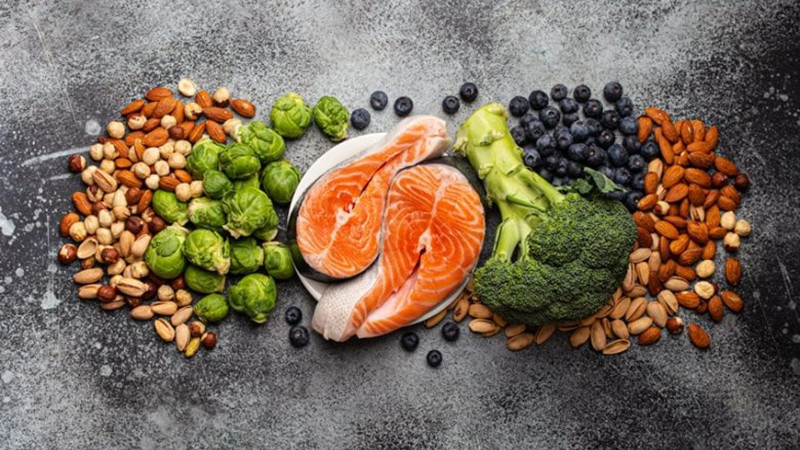
Joint pain can be a significant obstacle to maintaining an active and enjoyable lifestyle. However, you’re not entirely at the mercy of this discomfort. Certain dietary choices can make a world of difference. This article will delve into 21 foods good for joint pain, exploring how their anti-inflammatory properties and essential nutrients can alleviate discomfort and promote joint health.
From fruits and vegetables to seeds and spices, we will uncover the science behind how these foods work and practical ways to incorporate them into your daily diet. Take a step towards relief and improved mobility by understanding how the right foods can fuel your joints.
Understanding Joint Pain

Joint pain is often a result of inflammation in the joints. Conditions such as arthritis, gout, osteoarthritis, or rheumatoid arthritis are common causes. Joint pain can also be a symptom of overuse, injury, or age-related wear and tear. While there’s no cure-all, dietary choices can have a significant impact on joint health, potentially alleviating symptoms and improving overall health.
To help you better understand the causes and signs of joint pain, we’ve included a comprehensive video below. This resource provides in-depth insights into why joint pain occurs and what symptoms to watch out for.
Remember, it’s always important to consult with a healthcare provider if you’re experiencing joint pain, as it could be a symptom of a more serious condition.
Foods that Can Help Manage Joint Pain
1. Salmon

Omega-3 fatty acids in salmon are known for their anti-inflammatory properties, making salmon an excellent food for joint health. A study published in the Annals of the Rheumatic Diseases in 2013 showed that participants who consumed fatty fish like salmon were less likely to develop rheumatoid arthritis.
In addition, according to a 2017 study in the Journal of Nutritional Biochemistry, omega-3 fatty acids found in salmon decreased inflammation and attenuated collagen-induced arthritis in rats.
To further understand the healing potential of Omega-3 fatty acids for bone and joint pain, we’ve included an enlightening video below. This video will provide insights into how the Omega-3s found in salmon and other fatty fish can contribute to alleviating joint discomfort.
2. Flaxseeds
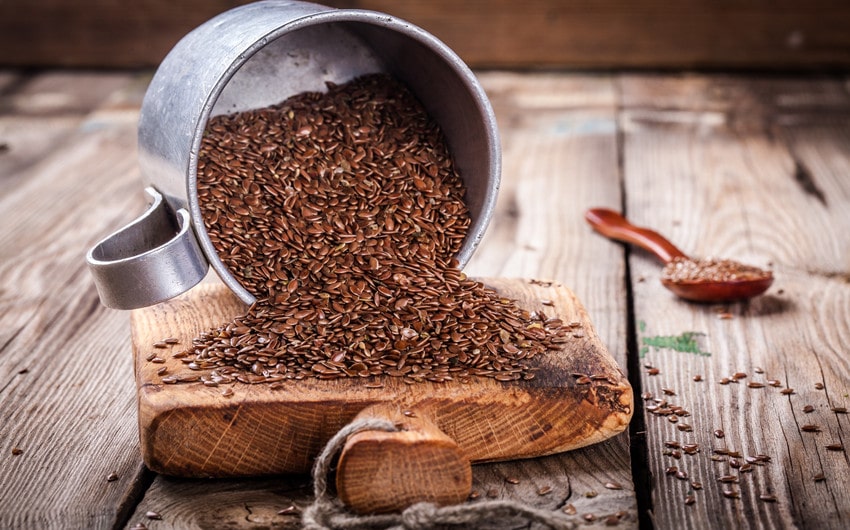
These seeds, known for their high alpha-linolenic acid (ALA) content, are a plant-based source of omega-3 fatty acids. A 2019 study published in the Journal of Dietary Supplements found that flaxseed oil, rich in ALA, has anti-arthritic effects, suppressing the development of arthritis in rats.
Further, a 2015 study in the Journal of Food Science and Technology indicated that flaxseed’s ALA and lignans can have anti-inflammatory effects, beneficial for joint inflammation.
3. Walnuts

Along with being a good source of omega-3 fats, walnuts are packed with antioxidants that reduce inflammation. A 2016 study in the American Journal of Clinical Nutrition found that a diet rich in walnuts lowered inflammation markers in the body. Another study published in Nutrition Journal in 2012 showed that walnuts could reduce C-reactive protein (CRP), a marker for inflammation.
4. Almonds

Almonds are an excellent source of several nutrients that could potentially benefit joint health. They’re packed with alpha-linolenic acid (ALA), a type of Omega-3 fat that helps reduce inflammation. A 2017 study in Nutrients showed that a diet high in ALA reduced inflammatory markers in the body.
Almonds are also high in protein, fiber, and monounsaturated fat, nutrients that can help maintain a healthy weight and reduce pressure on joints. Lastly, they’re a good source of vitamin E, which, as previously discussed, can help alleviate osteoarthritis pain. This suggests that incorporating almonds into your diet could have a beneficial impact on joint health.
5. Berries

Berries, such as strawberries, blueberries, and raspberries, are packed with antioxidants that have been shown to reduce inflammation. They are particularly high in anthocyanins, antioxidants that give berries their vibrant colors and are known for their anti-inflammatory properties. A 2020 study published in the journal Nutrients reported that berries’ anti-inflammatory effects could be attributed to their high anthocyanin content.
Furthermore, berries are high in vitamin C, which is necessary for collagen production. Collagen is a protein that helps maintain the health of cartilage, tendons, and bones, making it important for joint health. Consuming berries regularly could therefore contribute to better joint health and reduced joint pain.
6. Cherries

Cherries are known for their anti-inflammatory properties due to the high concentration of antioxidants they contain. The specific antioxidants in cherries are known as anthocyanins, which are also responsible for their vivid color. Some studies have found that cherries, especially tart cherries, may reduce symptoms of arthritis.
A 2013 study published in Osteoarthritis and Cartilage found that participants who consumed tart cherry juice for six weeks experienced significantly less stiffness and pain. The researchers suggested that the anthocyanins in tart cherries may be responsible for these benefits by inhibiting inflammatory pathways.
7. Citrus Fruits

Oranges, grapefruits, lemons, and limes are high in vitamin C, which is essential for the synthesis of collagen. Collagen is a vital component of cartilage, tendons, and bones, making it crucial for maintaining joint health.
Furthermore, citrus fruits contain bioflavonoids, powerful antioxidants that help reduce inflammation in the body. A study in the American Journal of Clinical Nutrition found that higher intakes of vitamin C were associated with a threefold reduced risk of rheumatoid arthritis.
8. Avocados

Avocados are rich in monounsaturated fats and antioxidants, both of which can help reduce inflammation in the body. Their high content of monounsaturated fats aids the body’s absorption of anti-inflammatory nutrients, making them a beneficial food for joint health.
Additionally, avocados are a good source of vitamin E, a nutrient that’s beneficial for relieving osteoarthritis pain. A 2017 study in the journal Clinical Rheumatology found that vitamin E supplementation could reduce pain and improve mobility in patients with osteoarthritis. This suggests that incorporating vitamin E-rich foods, like avocados, into your diet could be beneficial for joint health.
9. Pineapple

Pineapples are tropical fruits that are not only delicious but also packed with nutrients that can potentially benefit joint health. The key compound in pineapple that is believed to aid joint pain is bromelain. Bromelain is a group of enzymes found in pineapple that have anti-inflammatory and analgesic properties.
A study published in the journal Clinical Rheumatology in 2006 found that bromelain may help reduce joint swelling, pain, and tenderness associated with osteoarthritis and rheumatoid arthritis.
Furthermore, bromelain may enhance the absorption of drugs used in arthritis treatment, increasing their effectiveness. Pineapples also provide a good source of vitamin C, which is crucial for collagen formation, a significant component of joint health.
10. Spinach

Spinach is an incredibly nutritious leafy green that is high in antioxidants, one of which is kaempferol. Kaempferol is believed to reduce inflammation, and thus may help manage joint pain.
A study published in the journal Inflammation in 2017 found that kaempferol significantly reduced inflammatory markers and pain in a mouse model of arthritis. The researchers suggested that kaempferol could inhibit inflammatory pathways, which might account for its beneficial effects on joint pain.
In addition, spinach is an excellent source of vitamins A and K, both of which are important for bone health. Vitamin K plays a crucial role in bone mineralization and can help reduce the risk of fractures. Moreover, spinach contains a good amount of dietary fiber, which may help manage weight and thus reduce pressure on joints.
11. Broccoli
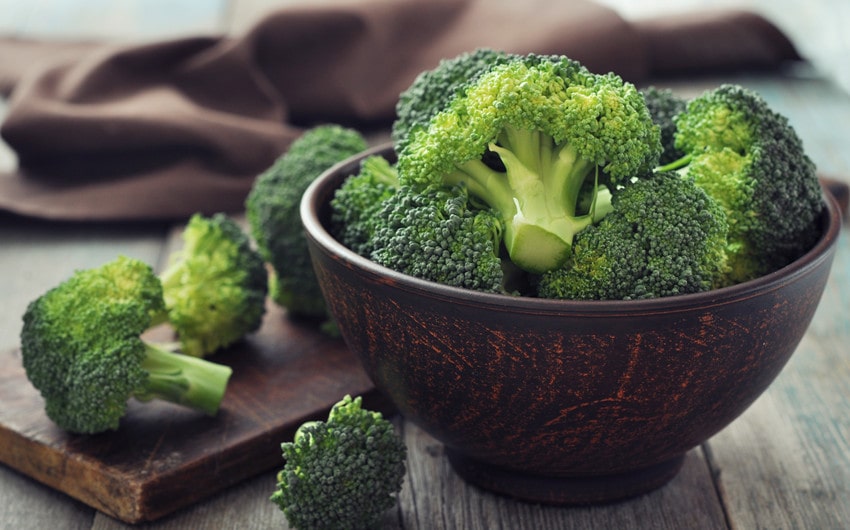
Broccoli is a cruciferous vegetable that offers numerous health benefits, including its potential to alleviate joint pain. One key component of broccoli is sulforaphane, a sulfur-containing compound with potent anti-inflammatory properties.
Research has suggested that sulforaphane may help reduce inflammation and slow down the progression of osteoarthritis. A study published in Arthritis & Rheumatology in 2013 demonstrated that sulforaphane blocks the enzymes responsible for cartilage destruction in joints affected by osteoarthritis. By inhibiting these enzymes, sulforaphane could potentially help preserve joint health and reduce pain.
12. Turmeric

This bright orange spice is more than just a staple in Indian curries. It contains a chemical compound called curcumin, known for its powerful anti-inflammatory properties. Research published in the journal Foods (2017) suggests that curcumin can match the effectiveness of some anti-inflammatory drugs, without the side effects.
It’s especially effective in reducing the pain and swelling associated with arthritis. Interestingly, a 2019 study in the journal Trials found that curcumin could also improve the quality of life for people with osteoarthritis when taken in combination with boswellia (another herbal remedy).
For a practical demonstration on how to incorporate turmeric into your diet for joint pain relief, we’ve included a video titled “Relieve Joint Pain and Osteoarthritis with Turmeric” below. This video will guide you on how to leverage the powerful anti-inflammatory properties of turmeric in your daily meals.
13. Garlic
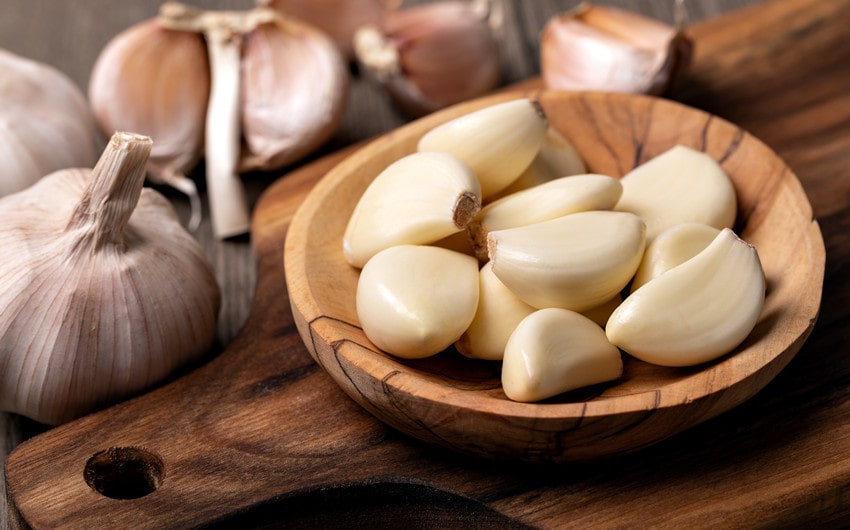
Garlic contains a compound called diallyl disulfide that can help limit the activity of cartilage-damaging enzymes in human cells. It’s known for its immune-boosting abilities which can help fight inflammation.
Research published in BMC Musculoskeletal Disorders indicated that garlic could potentially have anti-arthritic properties. The study, conducted on rats, found that garlic extract helped mitigate arthritis symptoms, and the authors suggested that this may be due to garlic’s anti-inflammatory properties.
14. Ginger

Ginger, similar to turmeric, has a long history as an anti-inflammatory remedy in traditional medicine. A study published in the journal Arthritis and Rheumatology (2001) showed that ginger extract can significantly reduce knee pain caused by osteoarthritis.
Furthermore, research published in the International Journal of Preventive Medicine (2013) found that ginger could reduce inflammation and symptoms of osteoarthritis of the knee.
15. Red Peppers

Red peppers are an excellent source of vitamin C, which is necessary for the synthesis of collagen. Collagen is a protein that makes up a significant part of our bodies, including the cartilage in our joints. Consuming vitamin C-rich foods like red peppers can help ensure your body has the necessary nutrients to maintain and repair your joints.
According to a 2011 study in The American Journal of Clinical Nutrition, higher dietary intakes of vitamin C were associated with a lower risk of developing certain types of arthritis. Red peppers are also rich in capsaicin, a compound that has been found to have pain-relieving properties when applied topically. This might provide some localized relief for aching joints.
16. Brown Rice

Brown rice isn’t just a great side dish. It’s a great source of dietary fiber, which has been linked to lower inflammation markers in the body.
According to a 2016 study published in the Journal of Nutrition, a diet high in whole grains like brown rice is associated with reduced levels of C-reactive protein, a key marker of inflammation in the body. It’s also rich in magnesium, a mineral shown in a 2015 study in Biological Trace Element Research to be essential for maintaining joint health.
17. Quinoa

Quinoa, a protein-packed grain, is also full of fiber and nutrients. Its anti-inflammatory properties may help reduce joint pain. A 2017 study published in the journal Molecules found that peptides (small proteins) in quinoa could help reduce inflammation in the intestinal lining.
Though the research focused on gut inflammation, it indicates the grain’s overall anti-inflammatory potential, which could extend to helping manage joint pain.
18. Chicken

Chicken is a lean source of protein which is essential for tissue repair, including in your joints. Adequate protein intake can help improve muscle health, leading to better joint support and potentially less joint pain.
A 2017 research review published in the journal Rheumatology highlighted that consuming adequate protein is essential for people with rheumatoid arthritis as it aids in maintaining muscle mass, which is often compromised in this group.
19. Lentils
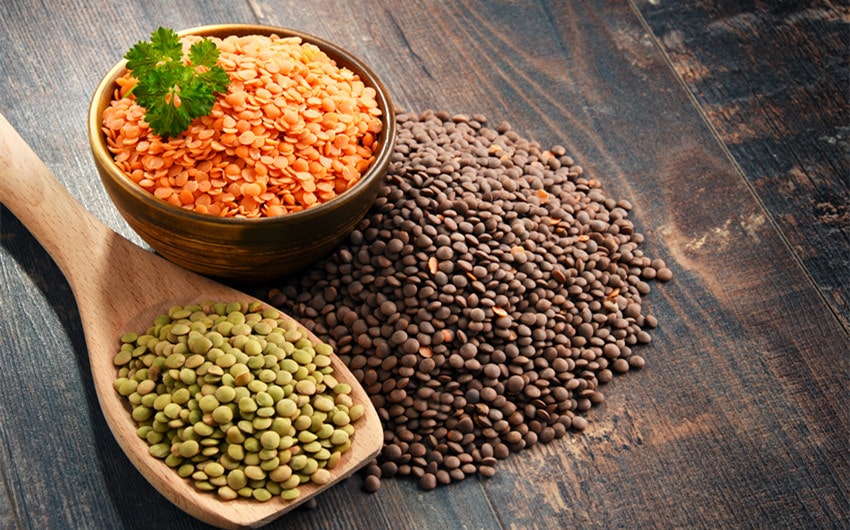
These versatile legumes are a great source of protein and fiber. They may help reduce inflammation and support joint health. According to a 2017 study in the Journal of the American College of Nutrition, consuming lentils can lower inflammation markers in the body.
The high fiber content in lentils also plays a role in reducing inflammation, as suggested by a study in The American Journal of Clinical Nutrition.
20. Green Tea

Green tea is renowned for its health-promoting properties, many of which can be attributed to its high content of polyphenols. These powerful antioxidants are believed to reduce inflammation and slow the destruction of cartilage.
Green tea also contains a potent antioxidant called epigallocatechin-3-gallate (EGCG). Research in Arthritis Research & Therapy has shown that EGCG can block the production of molecules that cause joint damage in people with rheumatoid arthritis. This suggests that regularly consuming green tea could have potential benefits for joint health.
To dive deeper into the health benefits of green tea, especially its anti-inflammatory properties, we’ve included an informative video below. This video will shed light on the scientific evidence behind green tea’s potential role in managing rheumatoid arthritis and reducing inflammation.
21. Olive Oil

Olive oil, particularly extra-virgin olive oil, is packed with health-promoting compounds. One such compound is oleocanthal, which has properties similar to non-steroidal anti-inflammatory drugs.
A 2005 study published in Nature found that oleocanthal inhibits the activity of COX enzymes, much like ibuprofen, a common drug used to alleviate arthritis pain. Additionally, olive oil is rich in monounsaturated fats and antioxidants, both of which can help reduce inflammation in the body.
Conclusion
Managing joint pain involves a multi-faceted approach, with diet playing a crucial role. Consuming a balanced diet rich in anti-inflammatory foods can support joint health, alleviate symptoms, and improve your quality of life.
Always consult with a healthcare professional or dietitian to create a personalized diet plan for managing joint pain. With the right foods, you can take a proactive stance against joint pain and enjoy a healthier, more comfortable life.








